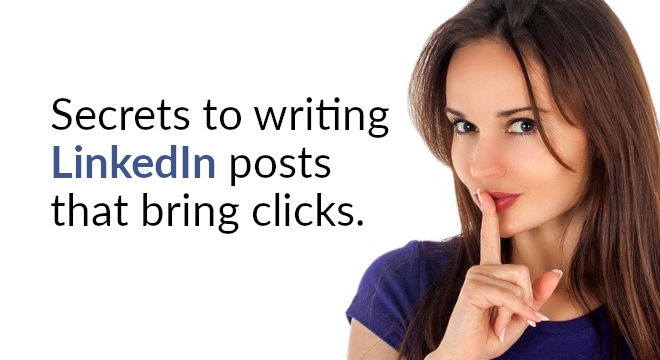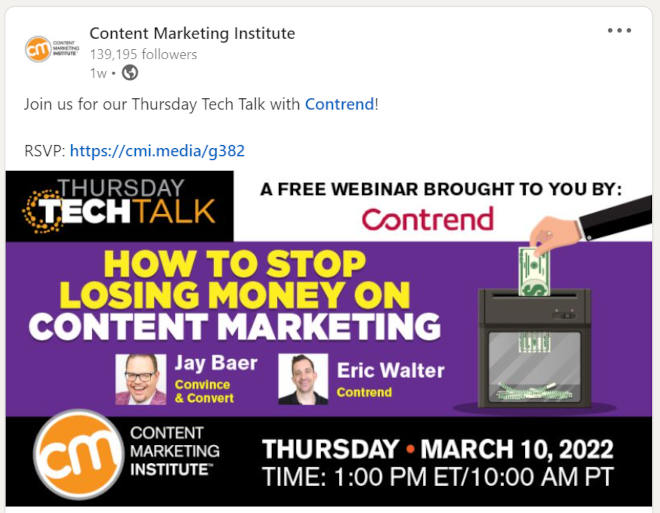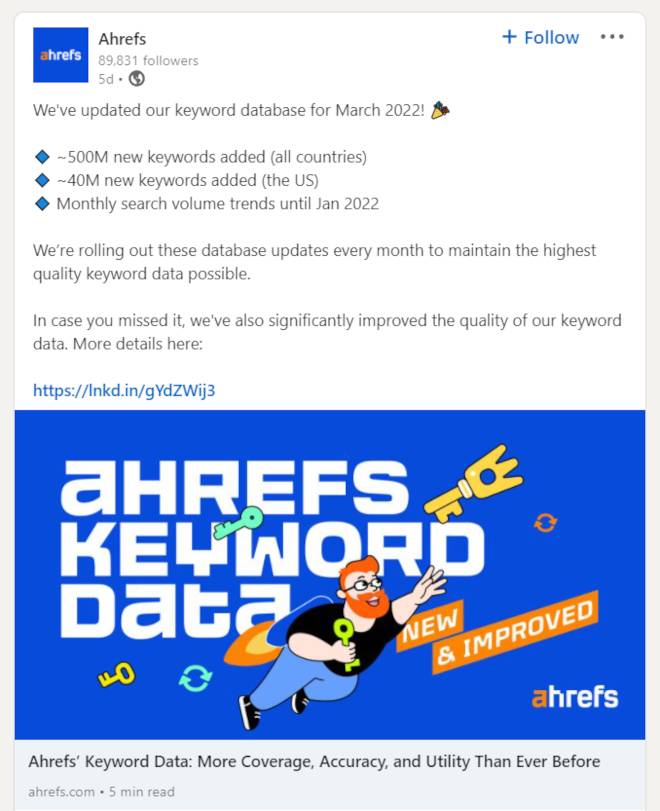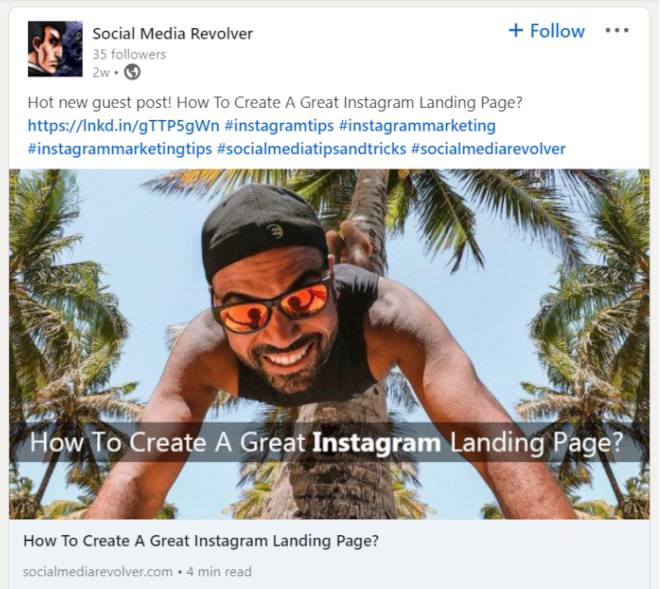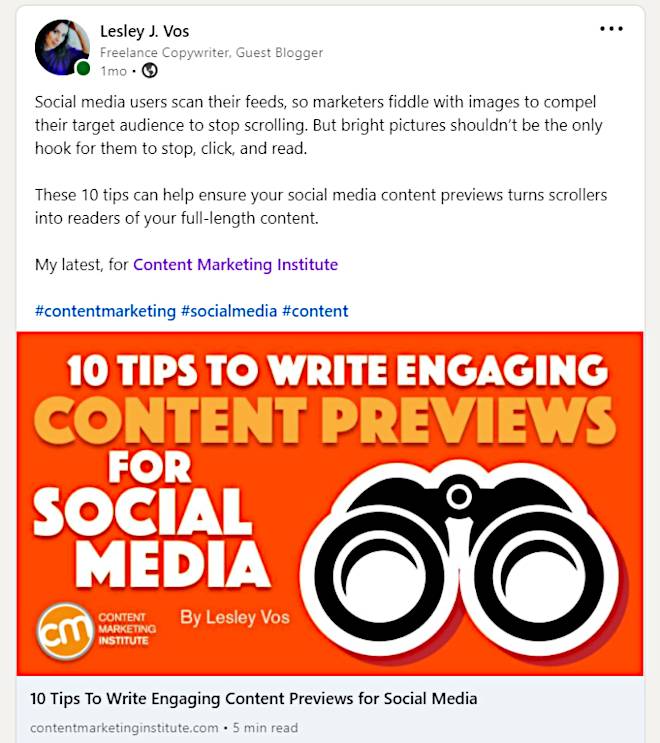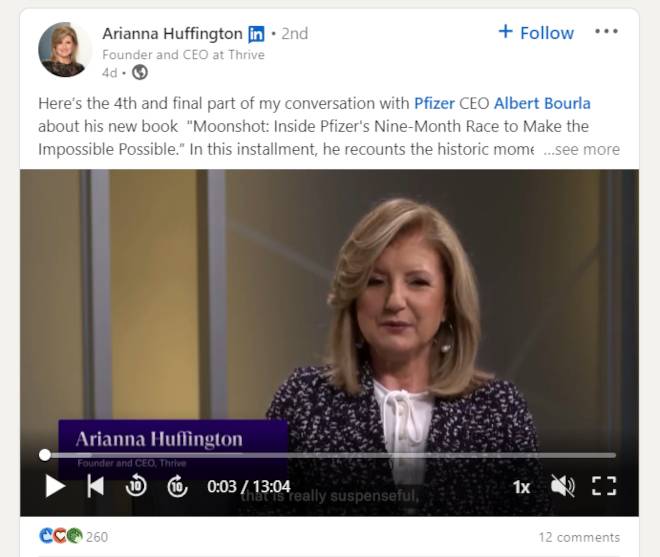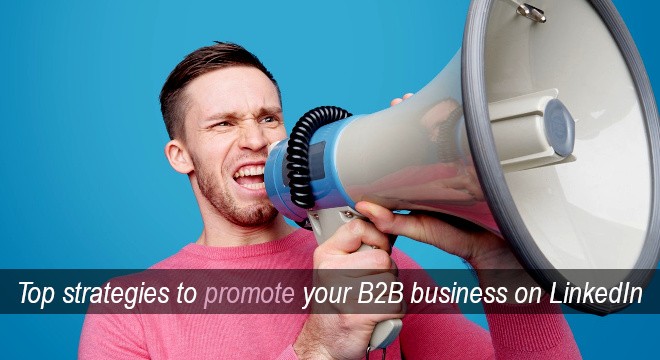With 770+ million users worldwide, LinkedIn has turned into a popular platform among professionals. It’s not only about personal profiles and career networking anymore: Both B2B and B2C brands use LinkedIn for marketing and lead generation.
To be precise, 89% of B2B marketers say they rely on this social media platform for generating leads. And 82% confess that LinkedIn is their most effective content distribution platform. The potential of LinkedIn for business is massive, making it the most popular platform among 92% of Fortune 500 companies.
That’s all well and fine, but here goes a problem:
The competition is so high that it becomes super challenging to stand out with your content on LinkedIn and engage your target audience with it: Given that 97% of B2B marketers use this platform for content marketing, your strategy should be exceptional.
To make users see your content and convert into followers or customers, you need to consider the peculiarities of the LinkedIn audience and write your posts accordingly.
In this article, you’ll find out how to do that.
Choose Content Types Carefully
Online content on social media is more about emotions and personal stories, not ads. And while we all consider LinkedIn a professional network for business, not leisure, the human brain works so that people scan social media content for something that would reflect their inner world.
In a business context, it’s all about brand storytelling.
Tell your business story, chapter by chapter, to trigger emotions from your target audience and encourage them to follow you.
Here go the five core rules of storytelling to consider when posting LinkedIn content:
- Give them a hero: It can be your CEO, employees, or customers.
- Ensure your story has a plot: It needs a setting, characters, conflict, and theme.
- Use principles of human perception to hook users and get a positive response.
- Remember your business mission and values: Your global goal needs to resonate with your target audience.
- Your stories need an element of surprise, but they should be relevant to your brand.
When planning your content marketing strategy for LinkedIn, keep in mind the peculiarities of this network’s audience, who are mainly male professionals between 25 and 50. The most trending content types for them are as follows:
- Industry news, testimonials, and case studies: They’ll help you build trust and represent your LinkedIn page as a reliable source of professional information.
- Webinars and interviews with experts in your niche
- Your company’s news, updates, and other types of announcements on what happens inside your business that can help the clients succeed
- Your blog posts with business tips and strategies: Write engaging previews to invite them to click and learn more.
- How-to’s, tutorials, lists: These content types perform best on LinkedIn as they provide actionable steps for your audience to follow.
Users come to LinkedIn to grow professionally, not kill their time with entertaining content, so share argumentative essays, informative, educational, and relevant to their interests and needs.
For not disappearing from your targets’ feeds, do your best to post at least three times a week. If you prefer posting daily, try to limit it to less than five posts a day. And remember that the best time to post on LinkedIn is Tuesday to Thursday, between 10 am to 12 pm.
Add Visuals – But Make Them Valuable
We all know that people are visual beings that better get engaged with images. This principle also works with LinkedIn though text-only posts perform well there too. The secret of choosing visuals for your LinkedIn posts is that they need to be valuable for readers.
It means avoiding general pictures to accompany your posts but focusing on professional and informative visuals like charts, diagrams, or infographics. Not only will they grab the attention of professionals on LinkedIn, but they will also help you visualize case studies, trends, and updates for better readability and perception.
Users crave informative and educational content on LinkedIn, and such visuals allow packing it briefly and engaging the audience to learn more.
Another secret you can use whenever relevant: Choose visuals with human faces in them. It’s our psychology that we instinctively pay attention to eyes and faces; that’s why such images will work well.
But it stands to reason that it should be photos of real people (experts in your niche, employees, customers, etc.). Ensure they are relevant to the context of LinkedIn posts you share.
Structure LinkedIn Posts For Better Engagement
We know that reading online is 25% slower than in print; plus, the attention span becomes shorter. With that in mind, it’s critical to pay attention to how you structure LinkedIn posts to influence their readability and engagement.
First and foremost, follow the best practices of web writing:
- Short sentences and paragraphs
- White space between paragraphs
- No slang or professional jargon your audience may misunderstand
- Attention to headlines
- A teaser in the first three lines of your post to engage users for further reading
Speaking of headlines, on LinkedIn, how-to and list-style headlines of 40-49 characters work best. Also, do your best to avoid questions in LinkedIn headlines.
As LinkedIn’s former editor Isabelle Roughol suggests, consider the 50% rule when working on your posts: 50% of your time goes to writing a perfect headline, and the other 50% goes to writing a post itself.
Also, remember to include links to your LinkedIn posts whenever relevant: Content with links drives 45% higher engagement, and it’s your chance to send more traffic to your critical business pages.
Hashtags work on LinkedIn, too: This social media platform recommends using 3-5 relevant hashtags per post for better reach and readability.
Consider Writing Tricks
As far as you probably know, LinkedIn now allows a 3,000 characters limit per post, which means you can write long enough, descriptive, and high-quality content for your audience.
But given that only the first three lines are visible for readers in their newsfeeds, it’s critical to focus on these three to motivate them to click on “See more.”
With that in mind, ensure the beginning of your LinkedIn post is eyebrow-raising. Writing tricks to use here can be as follows:
- A weird word
- An unusual or little-known fact
- A catchy quote
- A short dialogue (remember that every post is a story?)
- An extraordinary insight
- A catchy hypothesis or behind-the-scenes experiment
When writing, use a conversational tone to engage a broader audience. Also, consider the “one post = one thesis” rule: Don’t try to pack all the news into one post for business promotion.
Another secret of a successful LinkedIn post: Write it in the first person (use “I” or “we” pronouns); it will make you sound like a real person, helping you build a personal connection with the audience. Remember to tag people and other brands whenever relevant to reach a broader audience with your post. And please, always end it on a positive note.
Remember About Videos
According to Hootsuite, video is the most re-shared content form on LinkedIn: Users are 20x more likely to share your post if there’s a video in it.
Marketers confirm that among 38% of marketers who use videos on LinkedIn, 75% admit it was successful. The reasons are clear:
Users love watching videos on LinkedIn because they trust brands and consider those videos relevant. Video content helps them understand products or services better and get the information they need via a more convincing “Show, don’t tell” principle.
What video types to publish on LinkedIn?
- Stories about your business
- How-to’s about your products/services, with features and guides for the audience on how to use them
- Announcements of upcoming releases and events
- Lectures and business talks of influencers and opinion leaders in your niche
- Interviews with industry experts
Remember that users won’t spend a long time watching your videos: Make them short, optimize for mobile, and ensure they look professional.
Conclusion
Given its ever-growing number of users and organic reach, LinkedIn is worth your attention as a promising channel for social media marketing. This network is not about influencers and job search anymore: Big and small businesses successfully use it for promotion and lead generation.
The trick is to develop a consistent strategy and post comprehensive content, relevant to your business story and valuable for your target audience.
Share useful information, structure it for better readability and engagement, educate your audience, and focus on the quality of the information you provide. Visual content and web writing tricks will help here and allow you to get positive feedback from your followers.
[Recommended reading: Top Strategies To Promote Your B2B Business On LinkedIn]
[Image credits – Main photo: Pixabay/AllClear55; other images are screenshots from corresponding LinkedIn pages]
Lesley Vos is a web writer from Chicago. She is currently writing for several edu blogs, also contributing content for many publications on digital marketing, SEO copywriting, and social media. Feel free to follow Lesley on Twitter or LinkedIn.
